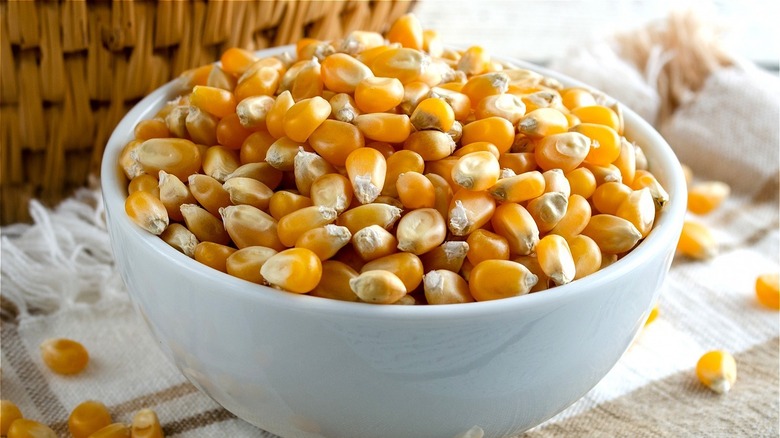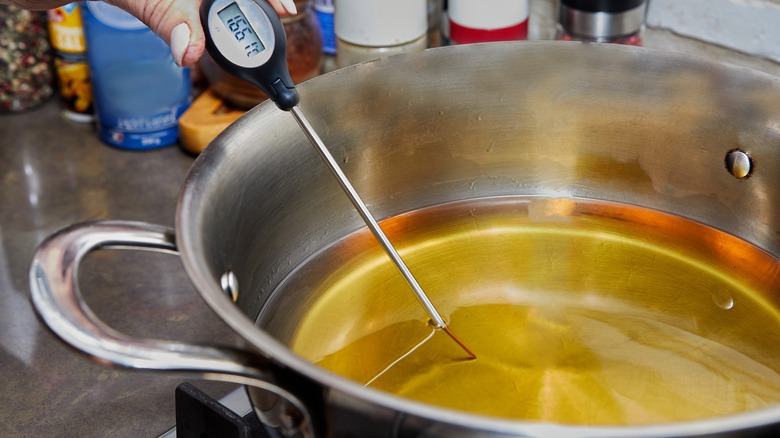How A Popcorn Kernel Can Fix This Classic Cooking Mistake
If you've ever had to fry something before, you would know that you can either use your air fryer or heat a big pot of oil. Frying something, in theory, sounds pretty easy since all you need to do is get the oil hot and put whatever you want in there until it's golden brown and crisp. But is it as simple as it sounds?
While heating oil isn't exactly rocket science, the real trick is making sure that the oil is at just the right temperature for frying. If you dunk your chicken into oil that's not as hot as it should be, you run the risk of having the chicken absorb too much moisture and come out a soggy mess that is dripping in grease rather than a crispy, golden hunk of meat (via Cook's Illustrated). If your oil is too hot, however, your food may wind up getting fried too fast on the outside while leaving the inside undercooked (via Bon Appétit). So if you let your oil get ripping hot in the belief that the food will cook faster, you'll likely end up with a burnt exterior and a raw interior.
How, then, can you test whether your oil is at that "sweet spot" where it's neither too hot nor too cold. If you have a food thermometer, your problem would obviously be solved. If not, there's actually one very simple trick you can do using a single popcorn kernel.
The kernel will pop at the right temperature
As Frymax explains, your popcorn kernel will act as an "alert" to inform you when your oil is ready. All you need to do is put your choice of popcorn kernel in the oil and allow the oil to heat as you normally would. Once the oil reaches a temperature between 325 to 365 degrees Fahrenheit, the kernel will "pop," signifying that the oil has reached the optimal temperature for frying.
While this is a very useful and economical trick to ensuring your oil is at the right temperature, you shouldn't rely on the popcorn kernel alone. As The Takeout tells us, there are several factors that could cause the popcorn kernel to pop rather than the oil itself. You may have a kernel that doesn't pop no matter how hot it gets, or you may have a kernel that pops too early. What you should do is use a small handful of kernels to ensure that you don't wind up with "defective" kernels, thus lowering the chances that you're getting the wrong signal about your oil.

